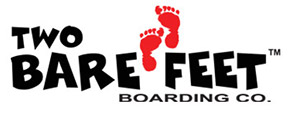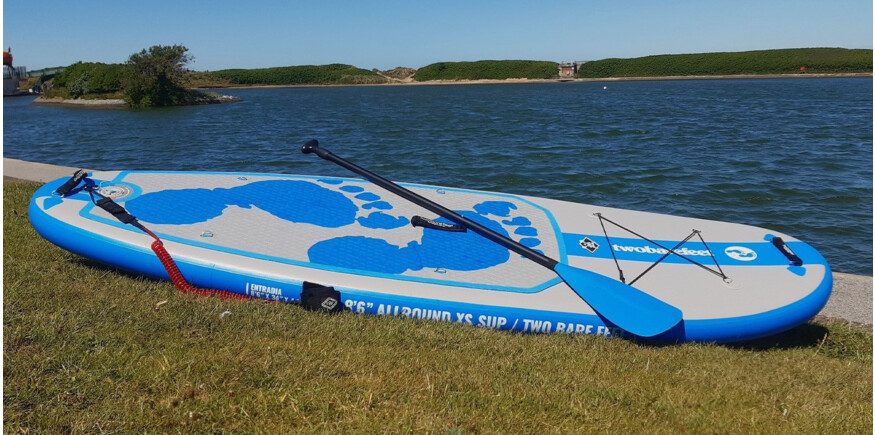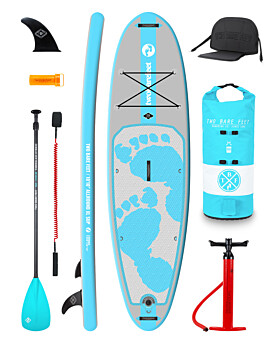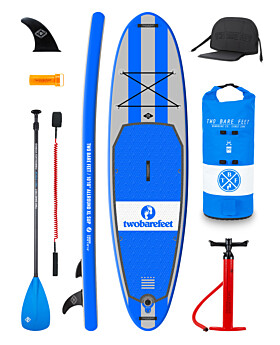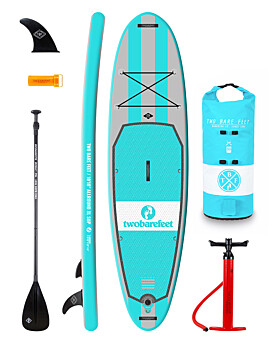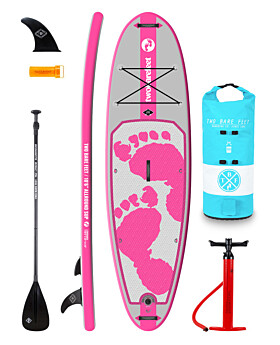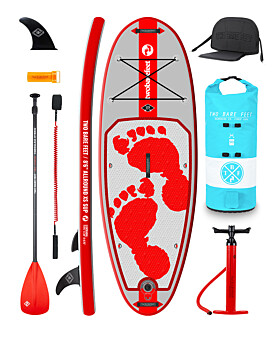Stand-up paddleboarding (also known as SUPing) is quickly becoming one of the most favoured water sports, both in the UK and beyond, and for good reason. Providing the perfect opportunity to witness beautiful outdoor sights, at the same time as cramming in a full-body workout, paddleboarding is undoubtedly the sport you need to try this summer.
Although it is favoured for its accessibility, there are a few things that SUP beginners should be aware of before jumping onto a board. Our helpful SUP tips are an ideal starting point.
What to wear on the board
Considering what you’re going to wear on your first expedition is hugely important and almost entirely weather dependent. Avoid clothes that aren’t designed to be worn in water – shorts and a t-shirt seem comfortable, but will take longer to dry, increasing the risk of you developing a chill.
Winter SUPing:
If you’re venturing into the water during colder months, we’d highly recommend a wetsuit. A wetsuit will keep you warm and protect you in case of a fall – a likely occurrence for beginners and experts alike!
SUPing in summer:
During summer, a full wetsuit isn’t always necessary. A rash vest, paired with a swimsuit or trunks will protect your skin from harmful UV rays. Be sure to stock up on waterproof sun cream too.
Spring SUPing:
Remember: even during spring months from around March to May the air will feel warmer, but the water hasn’t caught up yet. During this time of year, a wetsuit is essential as it will protect your body from going into shock if suddenly immersed in cold water.
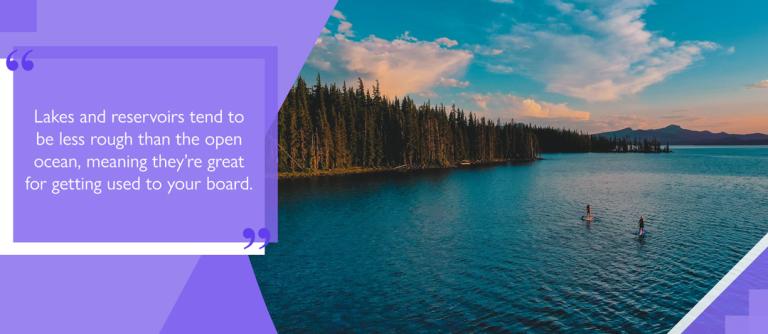

.
Paddleboarding for beginners - Research your location
Spend some time sussing out the best local paddleboarding spots, especially if you’re a beginner. Experienced boarders often seek the thrill of unpredictable waters, but beginners are better off opting for calmer destinations.
SUPing on the lakes:
In the UK, we’re lucky to have access to hundreds of beautiful reservoirs and lakes, which make ideal paddleboarding locations. Their waters tend to be less rough than the open ocean, meaning they’re great for getting used to your board. However, research your destination and only head to a reservoir where water sports are allowed, as many are privately owned or potentially unsafe.
Ocean expeditions:
If you’re a fan of the sea, opt for a sheltered spot without strong waves. Try to paddleboard at a beach that is patrolled by lifeguards and be sure to check the tide times and the weather forecast – being caught by a current or an off-shore wind can lead to a dangerous situation.
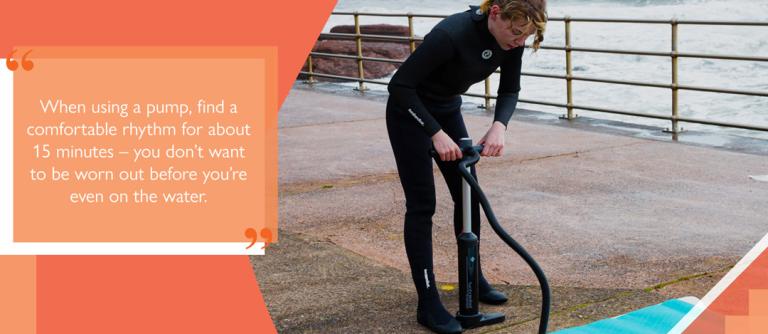

.
Choosing an inflatable SUP for beginners
If you’ve already begun researching what the best inflatable SUP for beginners would be, you’ll know that there is a huge variety on the market. The most popular length for an all-round SUP is 10’0”–11’0”. A board of this size will provide optimum stability and be easier to transport than larger ones.
While larger SUP boards can feel more buoyant, their size often means they lack manoeuvrability, making it difficult for a beginner. Similarly, a smaller board may be easier to manage but will lack stability. A stable board allows beginners to get to grips with SUP techniques and easily develop their skills.
However, length is not the only thing to consider; thickness is also important. Try a board between 4.75-6 inches – not only will it be easier to get back on a thinner board if you fall off; being closer to the water will increase stability. In terms of practicality, a thinner inflatable SUP will be easier to store, transport, and inflate.
Inflating your board
An inflatable board comes with the unique advantage of not having to carry or store a fully assembled board – instead, it lives compactly in a board bag, ready to be assembled as soon as you need it.
All our SUPs come with an easy-to-use hand pump, helping you head out on the water even quicker. So, find a comfortable rhythm that you can maintain for around 15 minutes – you don’t want to be worn out before you’re even on the water.
Paddleboarding for beginners – rent before you buy
While we are huge advocates for investing in your own board, we understand if you’ve never been paddleboarding before and just want to test the waters, you may want to try renting before purchasing a board.
Most coastal destinations or freshwater sports locations will have paddleboards available to rent at reasonable prices. You can gain a feel for what size paddleboard suits you best so you’re fully clued up when it comes to purchasing your own.
If you’re keen on keeping things personal, why not get kitted out with your own SUP accessories? Purchasing your own wetsuit, paddle, or dry bag is an affordable introduction to the paddleboarding world.
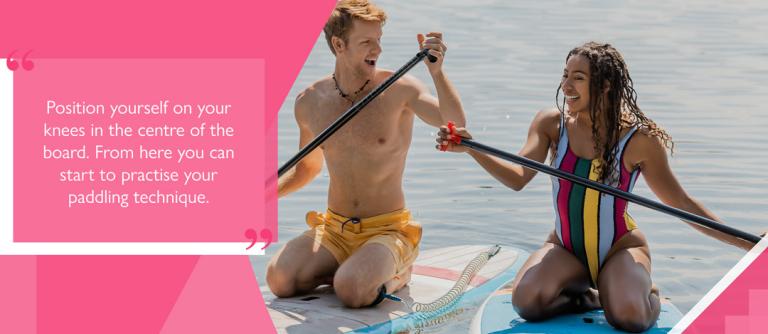

.
Kneel on your board before you stand
While the experts make paddleboarding look easy, this isn’t always the case. Although it’s called ‘stand-up paddleboarding’, the best way to learn is often by kneeling.
Once you’ve pushed off from the shoreline, position yourself on your knees in the centre of the board. From here you can start to practise your paddling technique, find your centre of balance, and become comfortable with being on the water.
Once you’re confident with paddling in a seated position, you can try standing on your board. Keep your knees slightly bent and be ready to absorb any movements in the water so you can adjust your balance accordingly.
Although kneeling is a recommended introduction to paddleboarding, many experienced paddleboarders will continue to kneel for a relaxed experience on the water.
SUPing experts
As inflatable stand-up paddleboarding specialists, we love helping beginners to get into this amazing activity. If you have any questions about SUPs, or any of our products, please don’t hesitate to get in touch with a member of our friendly team.
Alternatively, for extra information on owning and using a paddleboard, take a look at our handy user guide.
